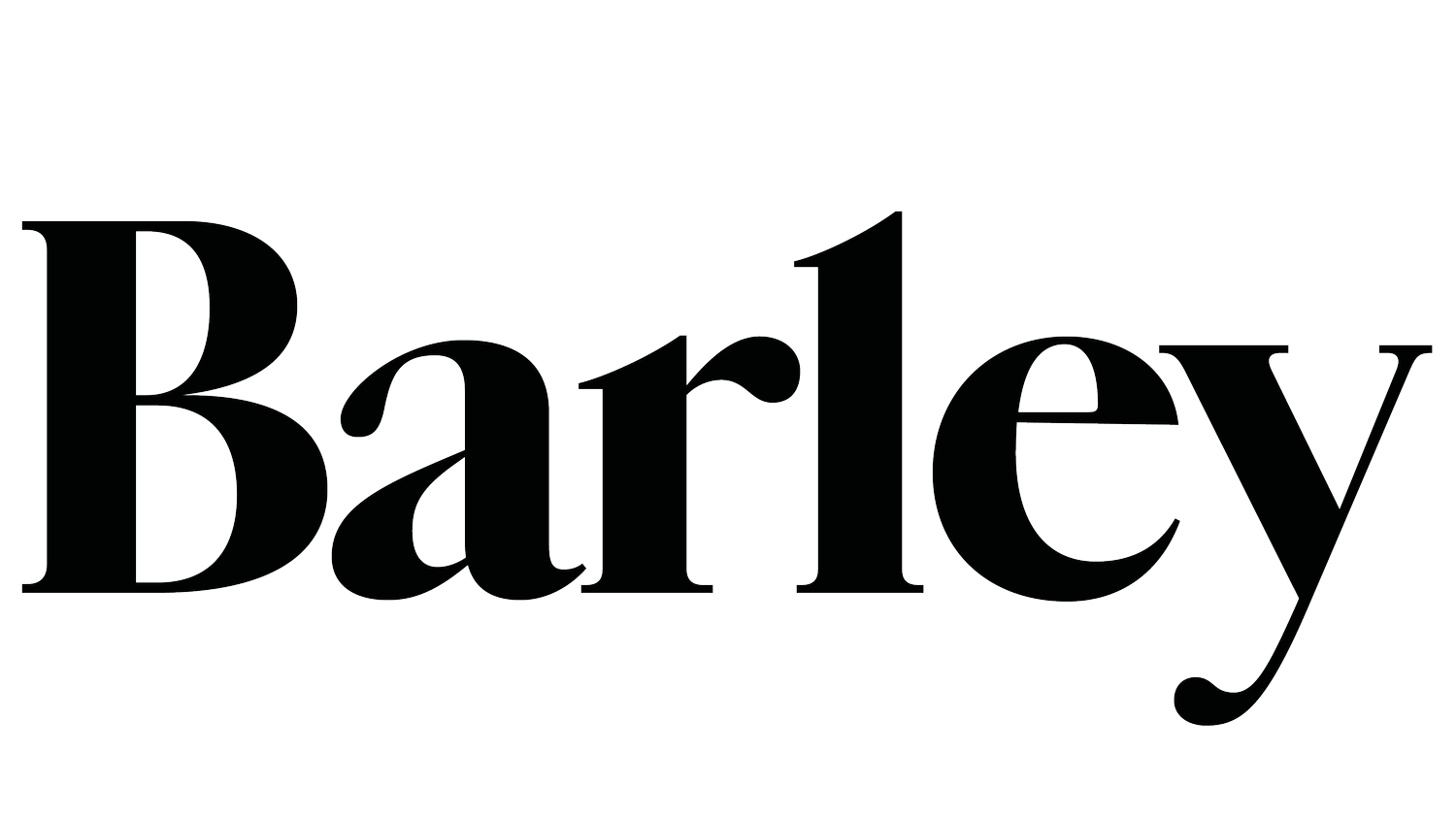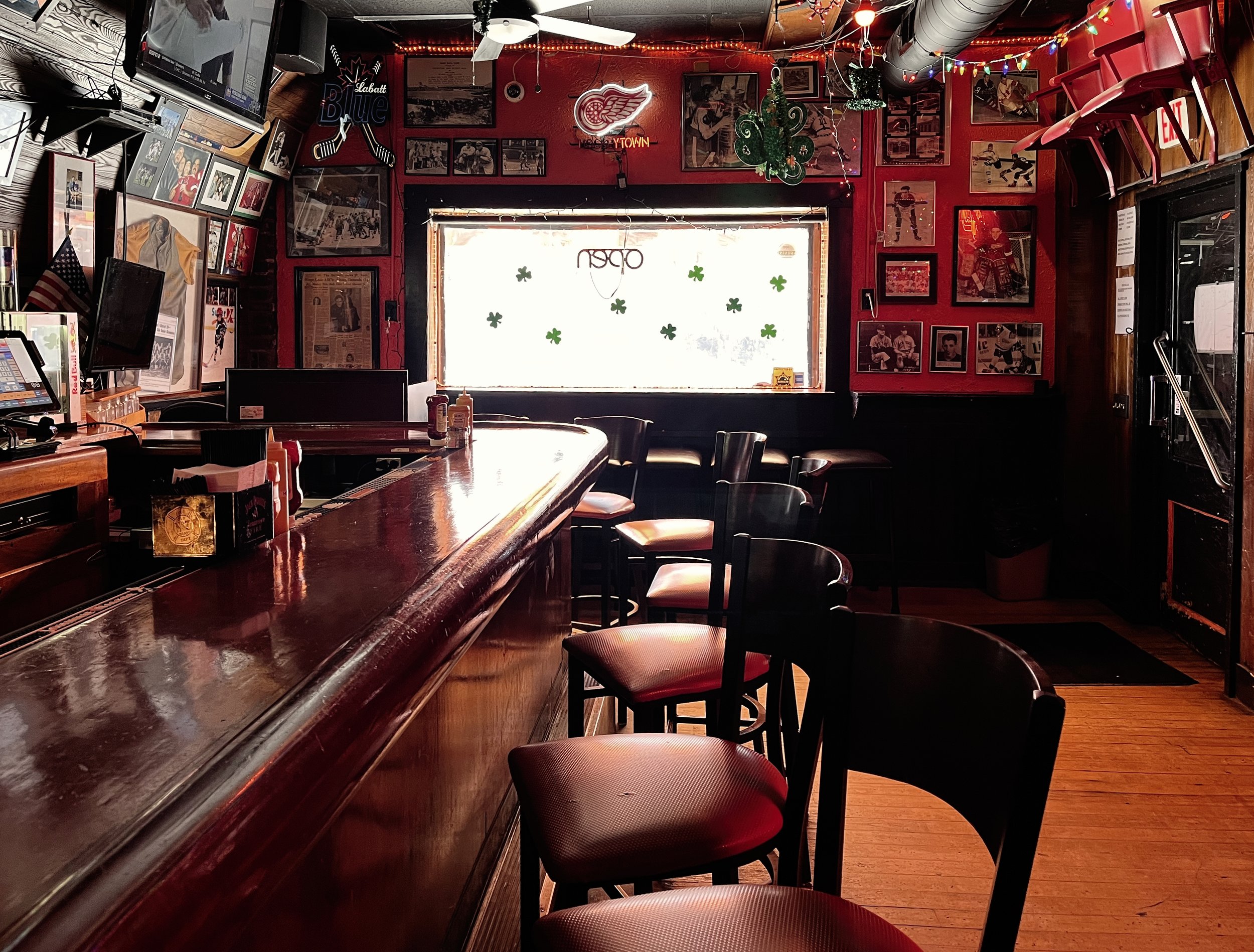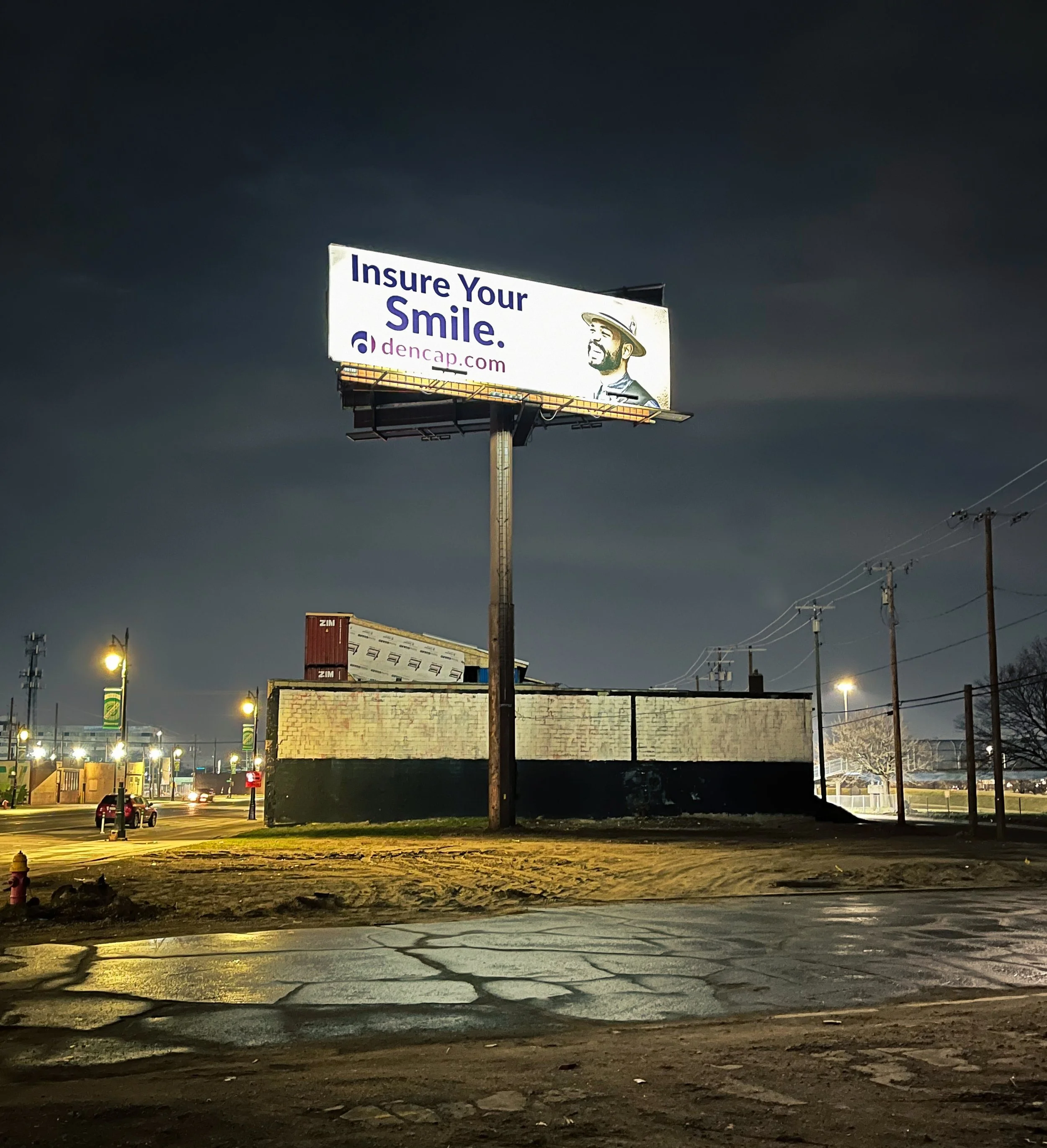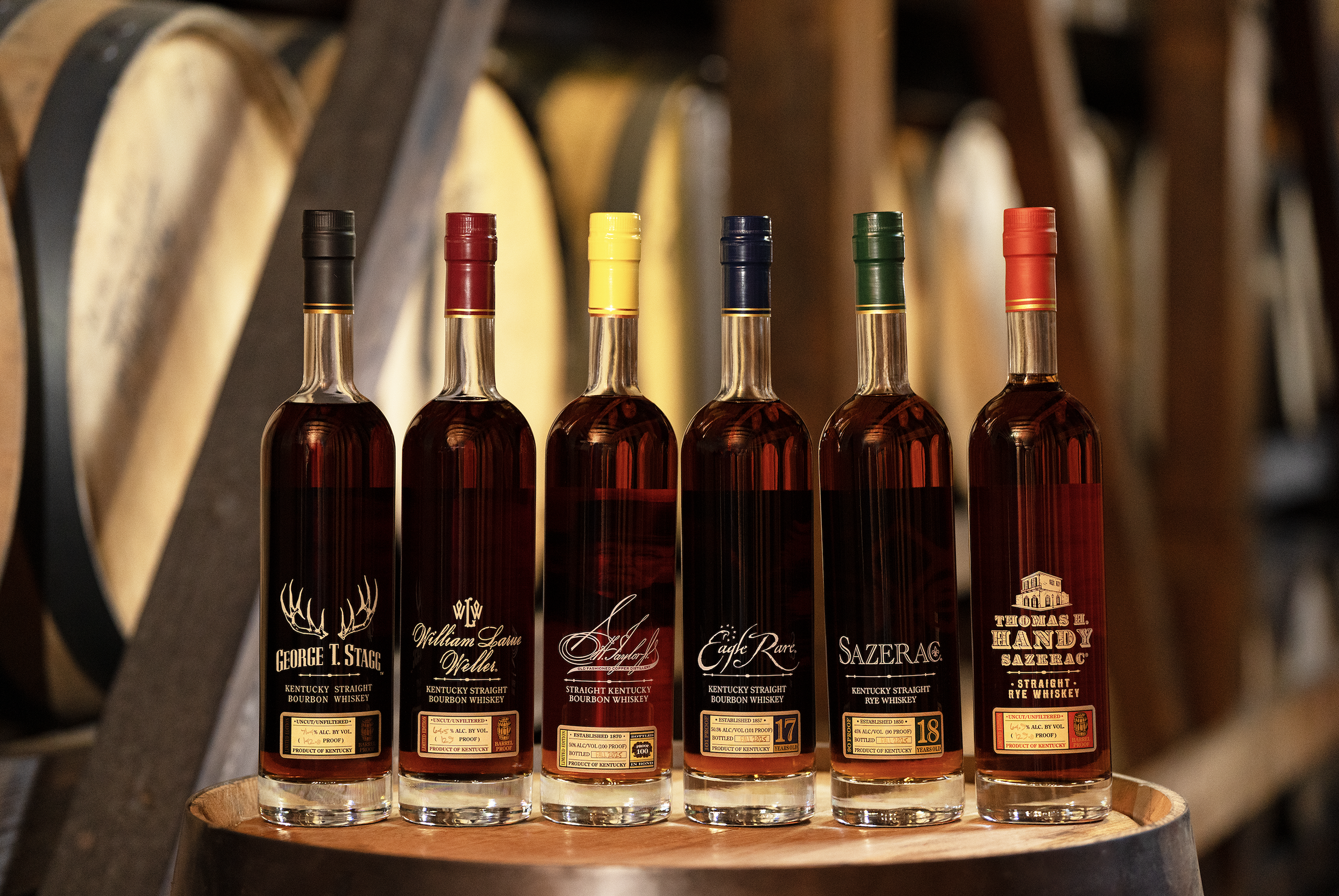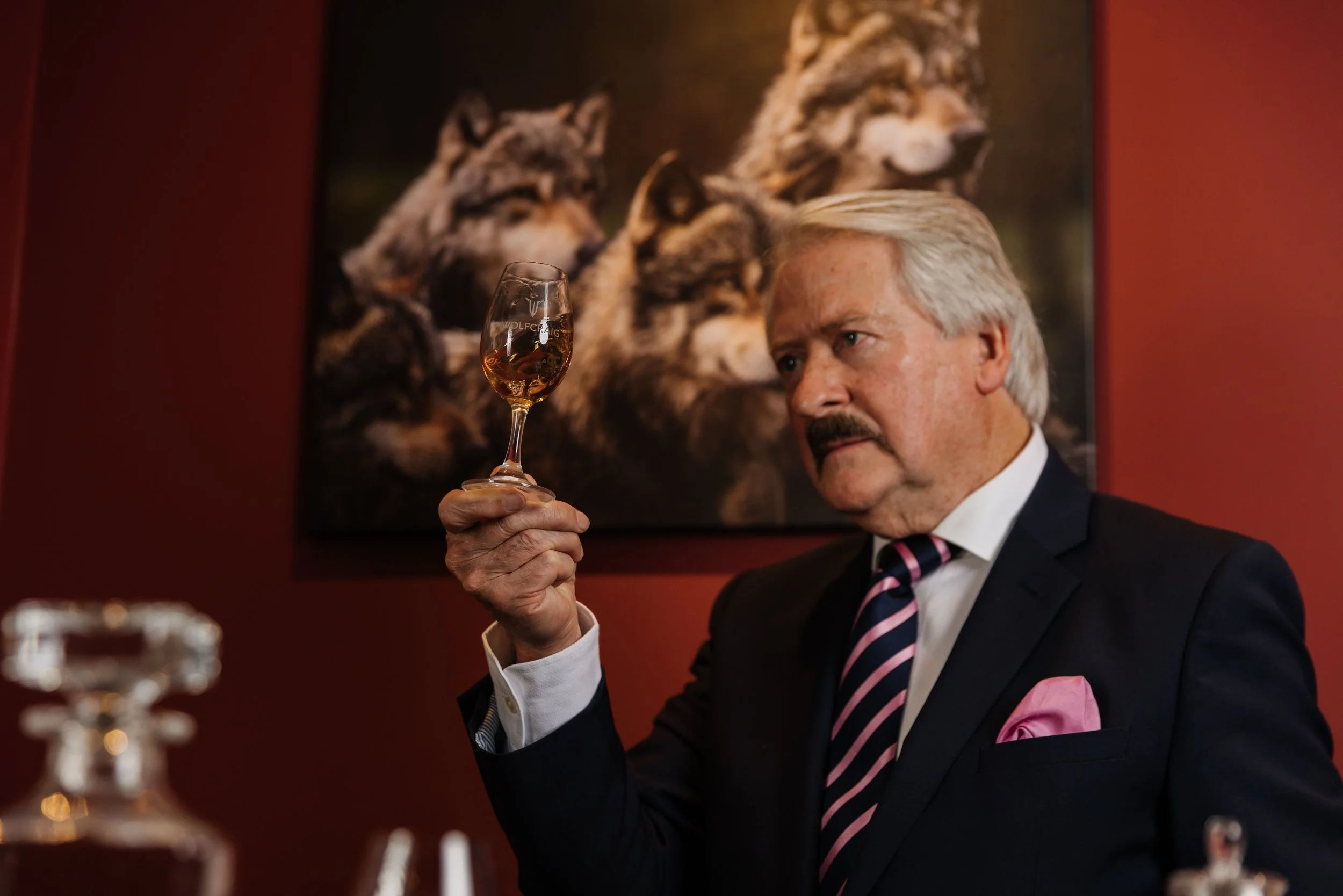Canada dry
Night scene on the backstreets of Detroit
Nina Caplan discovers gangster bootleggers, secret tunnels and perfectly preserved speakeasies on a historic border-run across Prohibition’s notorious ‘river of alcohol’ Photography by William Craig Moyes
To travel from Windsor to Detroit, you can take a tunnel, a bridge or a swim. Whichever route across the Detroit River you choose, you’ll be heading north: a quirk of the international boundary means that the Canadian city sits below its US neighbour on the map. Just a mile apart, the cities look very different – and only one is the birthplace of Motown. Still, both were shaped by three things: cars, booze and the slenderness of the boundary between them. If a river of alcohol flowed from one to the other during Prohibition, that’s because of the river.
First, said my friend Steve, a Windsor resident for over 20 years, you have to take a look at Walkerville. When Hiram Walker moved his distilling operation across the river in the 1850s he didn’t just build a distillery; he constructed a whole town for his workers, from houses to sewers to a fire department.
While the town is now part of Windsor, a few scraps of this display of benevolent dictatorship remain, including the great white grain stores for the distillery. Now owned by Pernod Ricard, and the only industrial building left on the waterfront, this is still the largest beverage alcohol distillery in North America and the place where Canadian Club – the name forced on Walker by American competitors eager to draw attention to the “foreignness” of their countryman’s product – is made.
‘The settlement was founded by the French (détroit is a strait). First that water became a trade route, then an international boundary. Prohibition ably combined the two’
With the exception of a smokestack belonging to the distillery and an apartment block or two, Windsor is fairly low to the ground, so the jagged and exciting skyline rearing before us as we drove down Ouellette Avenue startled me. What is that? I asked Steve, and he laughed. Isn’t it obvious? That’s Detroit.
The settlement founded by the French as Fort Pontchartrain du Detroit in 1701 was on both sides of the river and while several liquids would form its contours, water was the first. Starting with its name: the Count of Pontchartrain was the Minister for the French Navy; a détroit is a strait. First that water became a trade route, then an international boundary. Prohibition ably combined the two.
The skyscrapers of Detroit viewed from across the Canadian border in Windsor
It was the growing temperance movement that impelled Walker to build in Canada. “Drinking is carried to a great height both in Canada and the State of Michigan,” reported a travelling Scotsman in 1837: “No sooner are they out of bed than they call for their bitters, and day long they drink at brandy, gin or whiskey…” Reacting against cheap whiskey – 25 cents a gallon to produce, yet so profitable that saloons would throw in lunch for free – Americans were starting to militate for abolition. Safe across the river, Walker and then his descendants turned America’s Civil War and then the First World War to commercial advantage but sold up midway through America’s experiment with Prohibition, which began in 1920 – although of course, nobody knew then that the 18th Amendment would be repealed in 1933. (It is still the only Amendment to the US Constitution that has been.)
‘“Drinking is carried to a great height both in Canada and the State of Michigan,” reported a travelling Scotsman in 1837: “No sooner are they out of bed than they call for their bitters, and day long they drink at brandy, gin or whiskey”’
They must have grown tired of illegal enterprise, because they can’t have been worrying about profits. Vast fortunes were being made by bootleggers, more than worth the $1,000 bills (the equivalent of over $17,000 today) they used to buy off government agents. There were rumours that Walker had built a tunnel under the river to facilitate his business during America’s Civil War, which seems unlikely, although I heard similar stories about a secret tunnel at Tommy’s, a former Detroit speakeasy that’s now a sports bar.
This would have been very useful to the Purple Gang, a mob of Jewish gangsters who largely ran the city’s illegal operations during the 1920s, and may have been a leftover from the Underground Railroad, when emancipation from slavery lay on the other side of the Detroit River. There was, however, no way to check. In addition to its large televisions, hockey memorabilia and a popcorn machine with a sign warning off inebriated punters with the munchies, Tommy’s has information panels about its interestingly seedy past, but tours of the basement aren’t on offer.
Tommy’s Bar in Detroit
Either way, such a route was hardly needed. In 1920, the only tunnel, officially at least, was for trains and there was no bridge – but the strait was perfectly navigable by boat and in winter, when it froze, you could drive across it. “It was like a highway out there,” bootlegger Blaise Diesbourg, aka King Canada, told Marty Gervais, author of Rumrunners: a Prohibition Scrapbook, “and no one to stop you. Well, they had the law – but in the winter, it was hard to catch you.” Nearly 75% of liquor smuggled into the US during Prohibition came via Detroit.
‘In 1920, the only tunnel, officially at least, was for trains and there was no bridge – but the strait was perfectly navigable by boat and in winter, when it froze, you could drive across it’
Maybe that’s why the Ambassador Bridge got built (by the same team who would go on to construct San Francisco’s Golden Gate Bridge) before the dry spell ended, a bridge being a lot easier to police than a river. Around a quarter of US-Canada trade goods still pass across that bridge today, although these days, more of those goods are legal.
Downtown Detroit
The ordinary people called it Rumrunning; to fancy types, it was “the export business”. “Everybody took the stuff across,” King Canada recalled. “It was the best way to make some good, fast money.” It wasn’t as simple as booze being permitted on one side of the river: Prohibition came to Ontario, too, in 1916. There is no room here to go into the many loopholes that ensured a busy trade from supposedly dry Windsor to supposedly dry Detroit, but my favourite is the 1921 ruling that shipping the stuff from one to the other was legal, even though drinking it was forbidden in both places. Rumrunning became Detroit’s second-largest industry after automobile production, netting over $200million a year.
Detroit night scene
It had only taken us a few minutes to drive through the mile-long tunnel and most of that was spent waving my passport at the border guard. After Tommy’s, we wandered through eerily empty streets, past beautiful buildings bearing silent witness to the city’s noisy and prosperous past, to see the amazing Diego Rivera murals in the Detroit Institute of Arts. His nuanced depictions of technology and industry, cars and planes, jobs and class-based exploitation were painted in 1932-33, with Prohibition still in force, and to me, those straining factory hands look in bad need of a cool beer.
‘We paused at a low-lit bar where the cocktail ingredients included dark bottles labelled Absinthe and Smoke and drank cask strength Catcher’s Rye finished in vermouth casks, and a bourbon called Happy Stan Wrinkle, purely for the name’
I risked a Michigan-made wine – a Pinot Grigio, made in the newly trendy orange style, called Bestiary Ramato – at dinner and to my relief (I don’t usually order wines at restaurant mark-ups about which I know absolutely nothing) it was excellent. But it felt wrong to cross that border twice without tasting a little hard liquor, so we paused at a low-lit bar where the cocktail ingredients included dark bottles labelled Absinthe and Smoke and drank cask strength Catcher’s Rye finished in vermouth casks, and a bourbon called Happy Stan Wrinkle, purely for the name.
When an object of desire is banned it only makes that object more desirable – a fact that should be apparent from the glamour that still clings to the Roaring Twenties like beads on a flapper’s dress, no matter how much we read about the misery and violence, or the way most of those fortunes disappeared after Repeal like a river in a drought. Did this great American experiment actually achieve anything? According to the Detroit Historical Museum, approximately 1,700 saloons were forced to close in 1920. Thirteen years later, how many reopened? Approximately 1,700. Man is a thirsty beast.
Nina Caplan is an award-winning arts, food, wine and travel journalist
